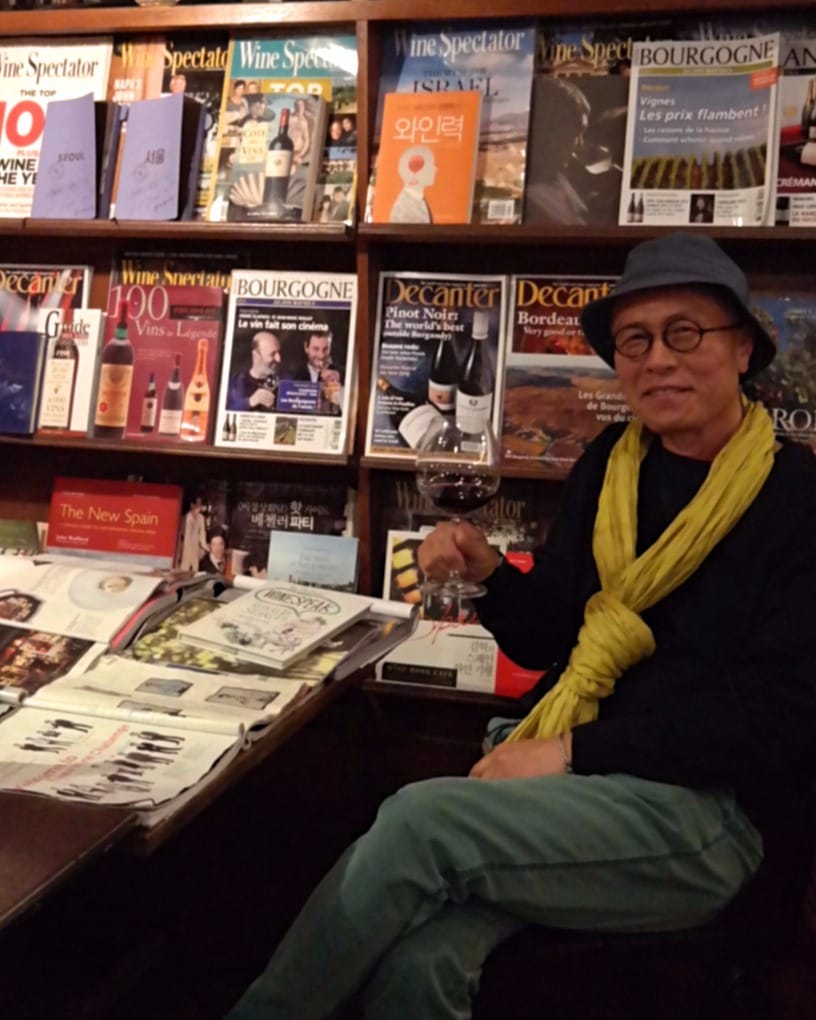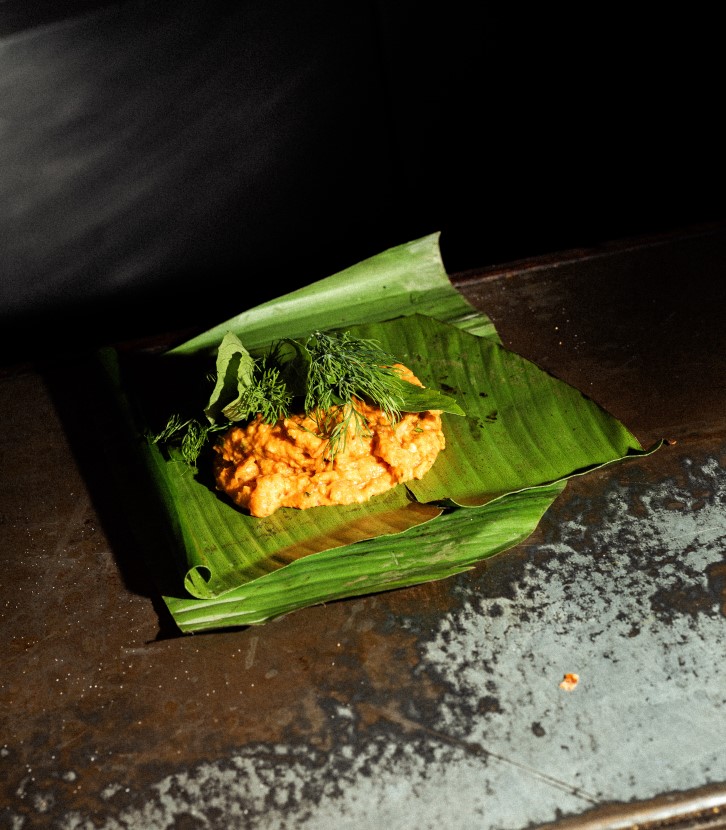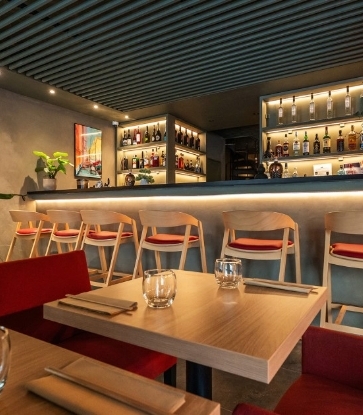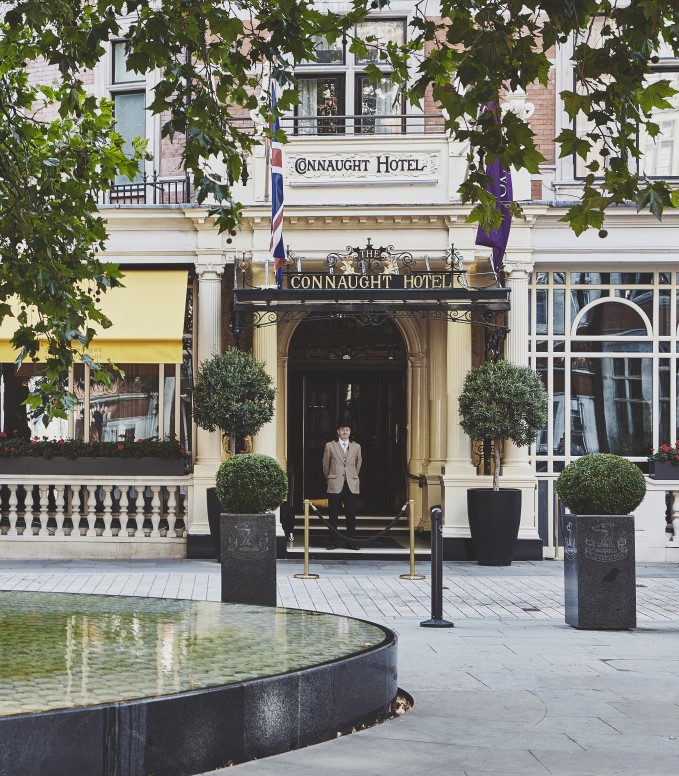Huh Young-man. Korea’s beloved comic book artist, gourmet, Korean food expert, wine enthusiast, classical music buff, mountaineer and yachtsman. There is no shortage of words to describe what Heo Young-man loves best in life.
Throughout his career spanning more than four decades, he has written and illustrated a staggering 215 critically-acclaimed and commercially successful comic book series including Bridal Mask, Chameleon’s Poem, Superboard, Oh! Han River, Tazza: The High Rollers, The 7th Team, Beat and Sikgaek. Recognized for their literary value, many of his works became films and television series which also went on to became instant classics of our time. A winning combo of utterly memorable characters, authenticity, and most importantly, plenty of heart, makes the artist’s works timelessly endearing.
But for anyone who loves to eat, there is, perhaps, no other work–among his awe-inspiring bibliography–that shines brighter than Sikgaek. Translated as “The Gourmet”, the 27-volume series explores the expansive realm of Korean gastronomy. The title ran from September 2002 until late 2008 to overwhelming response from readers of all generations. Sikgaek was so successful it was made into a film in 2007 and a TV series in 2008.
Regarded as a masterpiece and “bible” for all food lovers, Sikgaek is a triumph of Huh’s relentless search for Korea’s finest ingredients and dishes in a bid to preserve Korea’s culinary heritage. His meticulous research, which resulted in a truly staggering collection of data of photographs, memos, sketches, and detailed interviews, became the foundation for his delectable stories that are rich with cultural, historical and social insights. But what Sikgaek reminds us at the end of the day is the importance of food that connects people together, food that moves us.
If you are imagining the artist as a type who sits at his desk, sketching comics all day long, you couldn’t be more wrong. From conquering the Baekdudaegan mountain range that runs through most of the length of the Korean Peninsula to caravanning off the beaten paths of New Zealand, from climbing the Canadian Rockies and the Himalayas to circumnavigating the Korean coast on a yacht, from cycling through the Korean wilds in search of the best local eats to driving across Australia with his travel buds, he is forever searching for inspiration. Days before his departure for Australia, I sat down with the artist himself to talk about his works, food, travel, and his thoughts on the Michelin Guide.

It’s been 15 years since Sikgaek first came out. What made you decide at the time to write a comic series about Korean cuisine?
As an artist, you never want to run out of writing material. In that respect, food is great because there is just so much to talk about. My initial plan was to create a series about kimchi. I did my research and discovered there are around 130 different varieties of kimchi. But on second thought, I realized that kimchi will always be a sidedish, never the main. That’s when I decided to cover all Korean food, even alcohol.
It is rare to find a comic book artist who commits to a subject matter that he/she is genuinely passionate about over a long period of time. I am lucky that way. I still find myself browsing through the Sikgaek series from time to time, and I can honestly say I put my heart and soul into it. The series ended at volume 27, but my original goal had been to continue until volume 100. I was sad to end it because there was still so much more material to cover. But all good things come to an end, and I was able to work on new projects because Sikgaek ended.
How did you select the subject matter each time?
Before I started serializing Sikgaek, I’d prepared roughly 50 stories well ahead of time and I visited each of the eight provinces in Korea, twice, to do my research. But as the deadline approached, I realized the details of my research had become hazy. So I ended up doing another round of research to refresh my memory.
Picking an ingredient or a dish was always my first priority. Once I decided what I was going to write about, I listed each in a specific order. Just because I love food from Jeollado Province, I can’t always talk about Jeollado cuisine; I had to mix up the subject matters. After that, I sub-categorized each food by month, season and region.
Were there ingredients that you found particularly difficult to research?
Certainly. For instance, the young shoots of a Chinese lacquer tree must be eaten within days of sprouting. It was a fight against time, because if the shoots grow too large, it can cause some serious allergic reactions. But the young shoots are a delicacy and are eaten blanched and seasoned with vinegared gochujang. Pine mushrooms are tricky too. Both dry weather and too much rain can ruin the season’s harvest.
I was talking to a chef one time at a Japanese restaurant and we ended up talking about wasabi and umeboshi. These two ingredients are usually imported from Japan, but the chef told me that day that there is a man who stubbornly produces both right here in Korea. Stories like that are inspiring and I always make a note of it so I can incorporate it into my stories later.
What was the most challenging part about working on Sikgaek?
It’s always been more fun than difficult. I got to meet and talk with so many interesting people. The best part about researching food was arriving at each destination and always finding something delicious waiting for us.
It wasn’t always easy getting the information I needed because some folks just don’t feel comfortable being asked questions. But that’s what makes a skilled journalist – swaying people to eventually open up to you.

Of all the people you met and interviewed, was there anyone who left a particularly lasting impression?
There was an old lady I met at Jeonbongsan Mountain. She was a forager who’d spent her whole life venturing into these unimaginably deep mountains in search of edible wild greens. She said she was originally from North Korea. I followed her around for a few days, talking to her and asking her questions. Something she said at the end of my research has always stayed with me. “I don’t understand people who pull out entire plants down to the roots when they can just pick off the young leaves and shoots.” She said she wished people could be a little less greedy. I wonder if she is still alive. She was quite old at the time.
Have you always had an interest in food and cooking?
I grew up with seven sibllings. That made us a family of eleven including my father, my mother and my grandmother, living together under one roof. Going out to dine was something unimaginable to me when I was a kid. I had my first bowl of jajangmyeon in 9th grade. One day, the teachers summoned all the students running for school president and treated us to jajangmyeon. I didn’t even know how I was supposed to eat it. So I did what everyone else did – mix the sauce into the noodles.
When any one of us complained about the food our mother put on the table, my father told us to put down our chopsticks. Simple as that. For the longest time, my mother’s cooking pretty much constituted the realm of food for me. There is a line from Sikgaek that journalists like to quote: “The number of tastes that exist in the world is equivalent to the number of mothers in the world.” From birth, our palates are shaped by what we eat and continue to be affected by it into adulthood.
What is your favorite dish that mom makes?
Back in the days, when we didn’t have cellphones–or phones for that matter–the only way for me to let my parents know I was coming home to visit was to write them a letter. ‘I will be home in a week,’ I’d write, and on the day, I would take the seven-hour train down to Yeosu. The first thing my mother would make was kimchi made from godeulppaegi, an herbaceous plant belonging to the chrysanthemum family. Unlike nowadays, godeulppaegi back then was always foraged from the wild, and they had a deliciously bitter taste. My mother would soak these in salted water for a few hours to tame their natural bitterness, and season them just in time for my arrival. It was so good. I have never been able to replicate the same flavor nor have I had a better version elsewhere.
In hindsight, what do you think was the secret to your mom’s kimchi?
I think it was the fish sauce she used. I am guessing she added fermented anchovy sauce. The flavors of Yeosu cuisine used to be assertive and delightfully funky from the generous amount of fish sauce added to it. Sadly, not anymore. Because travel is so prevalent these days, local restaurants have toned down their flavors to cater to the masses, which is the the fastest way to kill authenticity. It’s a shame. I wish there were more restaurants that serve food that don’t all taste uniform.
Is there a dish or an ingredient that was common back in the days but has become difficult to find nowadays?
I grew up by the sea and I love seaweed. I remember eating a type of seagrass called eelgrass which my mother would buy by the bunch. They resemble scallions but are much thinner. We used to eat the white tips of this seagrass raw and they tasted naturally sweet and slightly salty. I don’t see those around anymore. The last time I saw them was while sailing around the southwestern coast, and I spotted them drifting near the seawall.
What does food mean to you?
I cannot tolerate people eating crappy food. I am not saying we should eat expensive gourmet food all the time. I just want us to eat food that has been prepared with love and care and to relish it, one chopstickful after another.
Whenever I eat instant noodles or just generally crappy food, the four to five hours until my next meal is just torture. I don’t feel well. Do you notice that the taste of bad food just lingers forever in your mouth? Let’s just eat better food. There is a better way to eat – even instant noodles.
Food is love and a bond that connects people together. That’s why people everywhere in the world eat and drink in the name of “doing business.” People put down their guards when they share a meal; they become more honest. That’s how business relationships are formed and friendships become ber.
What we grow up eating affects us longterm, but our palates do change over the course of our lives. Is there a dish you did not enjoy before but love eating now?
Our taste buds do change. I am from Yeosu where flavors tend to be b, especially kimchi. For the longest time, I didn’t like Seoul-style kimchi. Where are your parents from?
Both are originally from North Korea.
North Korean-style kimchi is similar to Seoul-style kimchi. Both have that same fresh, tame flavor and are made watery because folks from the north traditionally made naengmyeon (cold buckwheat noodles) with the kimchi brine. Where I am from, kimchi is salty and pungent.
With age, my digestive system isn’t what it used to be, so now I prefer the cleaner and milder flavor of Seoul-style kimchi. It’s more refreshing.
Have you ever thought about what you might have for your last supper?
Until recently, I was never into Pyeongyang-style naengmyeon. Now, I love it. I’ve always been a fan of buckwheat noodles and I used to avidly search for the best places to eat them, but buckwheat noodles in Korea were always served a little too moist and didn’t really do it for me.
During one of my trips to Japan, I overheard someone mention a restaurant somewhere up in the mountains that served amazing soba. People would apparently fly in from Tokyo in helicopters just to eat these noodles. That day, my guide had already made reservations for us to go eat at a pork restaurant, but I told him to cancel that reservation because I’d made up my mind to go eat soba.
We had to climb up a narrow winding path to reach this restaurant. It was so secluded that I jokingly threatened the guide that I’d leave him alone in the middle of the mountains if the noodles ended up being disappointing. They turned out to be the most delicious buckwheat noodles I’d ever had.
Delicious in what way?
They were incredibly nutty and fragrant. I asked the owner, “Why are these noodles so tasty?” He said the noodles were made from buckwheat that was harvested just three days ago. It was a revelation! He was right; buckwheat should be eaten as soon as they’ve been harvested.
Buckwheat season lasts from October until February – even March would be pushing it. Buckwheat, according to Korean medicine, has cooling properties, so Koreans have traditionally avoided eating it during winter. Instead, we eat it during the summer months – when they are essentially flavorless!
From that moment on, I could differentiate good buckwheat noodles from those that are mediocre. That is also the moment when I started to appreciate Pyeongyang-style naengmyeon, which are made from buckwheat noodles. To answer your question, my last supper would be Pyeongyang naengmyeon.

Do you have a favorite naengmyeon restaurant?
I have a couple of go-to places near Bundang in Seongnam City – one in Seohyeon-dong and one near my place in Unjung-dong. My top favorite, though, is located on top of Namhansanseong Provincial Park that serves a mean bowl of Pyeongyang naengmyeon. On rainy days and snowy days, naengmyeon is half price at five bucks a bowl. Their noodles are made with 80% buckwheat flour. The noodles are served with a side of pale white radish kimchi with hardly any chili powder; I would venture to say it almost tastes bland. It turns out, the restaurant intentionally make their kimchi “bland” so that it doesn’t override the delicate flavor of the naengmyeon broth and the noodles. For me, that is the kind of place worth returning to.
What is your least favorite food?
I will generally avoid hanjeongsik or full-course Korean meals where all the dishes are served together and nothing hot except for the rice and the soup. I don’t like fusion food either because it lacks identity.
I cannot stress how much I dislike sweet foods. Korean food in the 21st century are laden with sugar and artificial seasoning. It feels to me like restaurants are trying to disguise the lack of flavor in their food by smothering it with sugar. It’s horrible. When I cook, I use only salt and the basic fermented condiments like ganjang (soy sauce), gochujang (fermented chili paste) and doenjang (fermented soybean paste) as seasoning.
I think we now live in an age where restaurants should be able to ask their customers what their preferences for seasoning are. Standardizing every dish by drowning them in the same sauce lacks sincerity.
People are caring more and more about eating consciously, organically and seasonally.
Times were hard in Korea not too long ago and people couldn’t afford to be picky about what they ate. When I was young, most people were grateful to be able to put food on the table. Koreans are known for their love of grilling meats, but that is a recent phenomenon. Beef was something I would find in my bowl of seaweed soup my mother made me on the morning of my birthday. Sometimes a pig would be slaughtered when somebody passed away to be shared after the funeral. Do you know what I used to bring back home to my parents as gifts? A small chunk of beef from the butchers wrapped in newspaper. That and a bag of sugar.
When did you start to cook?
From my studio, it takes an hour and a half to walk to the nearest restaurant, order, eat and walk back. My apprentices didn’t like walking too far to eat lunch. So, I hired a cook for convenience’s sake, but the menu got routine after a while. We thought, ‘Why not just cook what we want to eat ourselves?’ The problem was the kids didn’t know how to cook back then. So I started cooking out of necessity.
What do you like to cook?
Today, I braised some salted mackerel for lunch. It turned out slightly too salty; I think I added too much soy sauce.
How did you braise the mackerel?
First, I lined the bottom of a pan with sliced daikon radish and poured a little water over them to make sure they don’t stick to the bottom. I cooked the radish until they turned slightly soft. Then I placed pieces of salted mackerel on the radish with thinly sliced onions and poured the sauce I made by mixing soy sauce, garlic, green onions and sesame oil. You have to make sure the liquid doesn’t reduce too much or else it will get too dry and salty.

I heard a month-long road trip is in the works.
I am off to Australia with the usual gang. We’re taking the road less traveled.
What do you eat when you’re on the road like that for extended periods of time?
We mostly eat local cuisine. In Australia, we’ll be driving for long hours so we will be taking some Korean food with us as well.
You’ve been to Japan numerous times. What has been your most memorable meal in Japan?
Monkfish. These fish can grow to be quite large in size and can be extremely tricky to handle uncooked because of their mushy flesh and slippery skin. In Japan, fishmongers hang and secure monkfish on a tripod-like apparatus before slitting the belly open to gut them. At this one restaurant, I ate monkfish sashimi and monkfish soup. To finish off, the chef prepared a beautiful rice congee in the monkfish broth and finished it off by cracking an egg in it. It was sublime.
Do you prefer meat or seafood?
Seafood. As for meat, the leaner the better. I don’t understand why people would pay an arm and a leg for beef with all that marbling. It’s way too fatty.
I remember this beef I had while I was road tripping through the Canadian Rockies. It was a cold evening so my crew and I were the only people using the barbecue area at the camp site. We bought some cheap cuts of beef at a supermarket, seasoned it simply with salt and cooked it over a wood-fired grill. It was wonderful. I have never been able to emulate the same flavor and texture of the steak we’d eaten that night. It was some of the best beef I’ve ever had.
Six months have passed since the launch of Michelin Guide Seoul 2017. What are your thoughts on it?
If you ask me, there are way too many restaurant guides and blogs these days – so many recommendations on the Internet with little credibility. But when a reputable source like the Michelin Guide recommends places, it’s a different story, because it has highly selective screening process. Everyone is entitled to their personal opinions when it comes to food and not everyone will agree with Michelin’s recommendations, but I feel like–at the very least–I can count on having an experience that is well above average.
How do you search for restaurants?
Do you want my honest opinion? For local restaurants, always ask the taxi drivers. I have rarely been disappointed.
What other plans do you have for 2017?
I recently ended the run of my latest comic series about coffee. Right now, I am working on a new series about stock investment. It will be published in early July after I return from Australia.
Published 2017.05.14

















